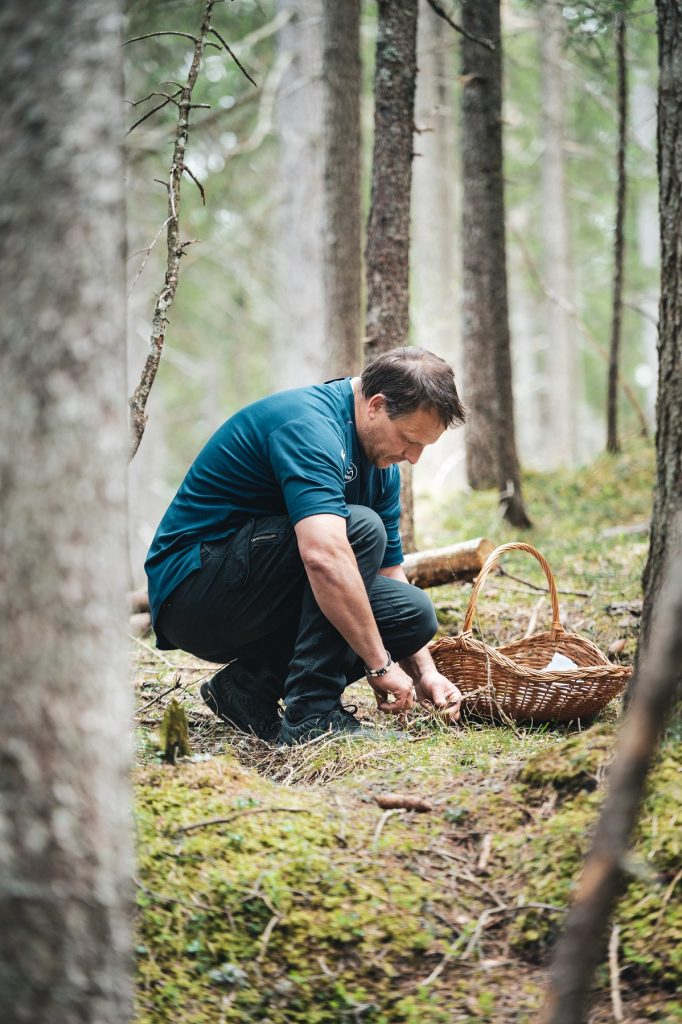Cycling Through Trentino’s Vineyards
26.04.2024Trentino, the northern Italian region, is a cycling paradise with numerous routes that challenge even the most hardcore of cyclists....
This summer the Italian mountain region of Alta Badia, famous for its locally-sourced foodie credentials, will see the arrival of its own ‘Food Forest’, a multipurpose cultivation area which will use a system of sustainable agriculture to grow natural food produce as well as permanently absorb carbon dioxide.
The Food Forest, otherwise known as an “edible forest” or a “forest orchard” is a multipurpose cultivation area made up of trees, plants, medicinal and officinal herbs, berries, and other fruits. It is comprised of a sustainable agricultural system that permanently absorbs carbon dioxide and increases alpine biodiversity while at the same time improving soil fertility.
“Situated in the Dolomites UNESCO World Heritage Site, Alta Badia strongly believes in protecting the environment and is already promoting other sustainability projects,” a resort spokesperson explained, who added, “Responsible and ongoing wildlife conservation is fundamental for the preservation of local natural beauty. The inhabitants of this area, the Ladins, view the protection of the Dolomites through the lens of sustainability, and it is their love of these mountains which enables them to educate tourists on how they can visit in an environmentally conscious way.”
In collaboration with Etifor, a branch of the University of Padua, Alta Badia has identified an ideal spot for its Food Forest at the Passo Campolongo in the Masisti Wood. Thanks to the WOWnature Alta Badia initiative, a reforestation programme was started in this wood last year after the area was severely damaged by Storm Vaia. The wood, which can be visited in summer months, is now home to huge biodiversity and delicious natural produce such as blackcurrants, raspberries, wild strawberries, juniper berries, elderberries and other fruits, all just waiting to be discovered.
Self-guided walks through the woods, as well as organised trips, will be available for visitors to discover everything that Mother Nature has to offer. Information boards will line the path, allowing visitors to learn the secrets of the surrounding woods while they enjoy their walk. It will be a profound experience, one which will allow you to recharge your batteries, enabling you to face the challenges of daily life while feeling at one with nature. Along the path there will also be information on how the herbs and fruit produced by the woods are used in local Ladin cooking.
On average a European citizen produces on average 5,000 kg of CO2 a year. Throughout its life, a tree catches approximately 700 kg of CO2. To balance one’s own CO2 emissions, a person should therefore plant seven trees per year.
Visitors, local residents and businesses can all get involved with the Food Forest and help to protect the wood by adopting a tree.
Image by Alex Moling

Enjoyed this article? click here to get more from us
Trentino, the northern Italian region, is a cycling paradise with numerous routes that challenge even the most hardcore of cyclists....
Summer in Tucson, Arizona, promises great hikes, horse rides and clear skies full of stars. Guest Ranches in and around...
The North Face have announced an Earth Week initiative to clean-up hiking routes in England and Walkes, this coming Saturday...
In Italy’s Alta Badia, when the inhabitants of this South Tyrolean valley talk about sustainability, they use terms such as...